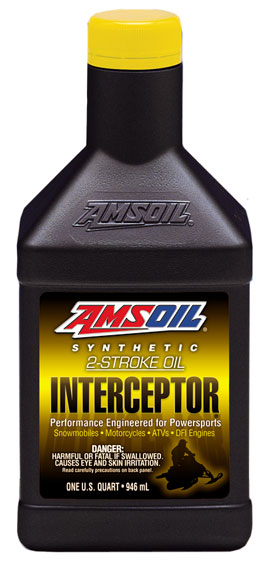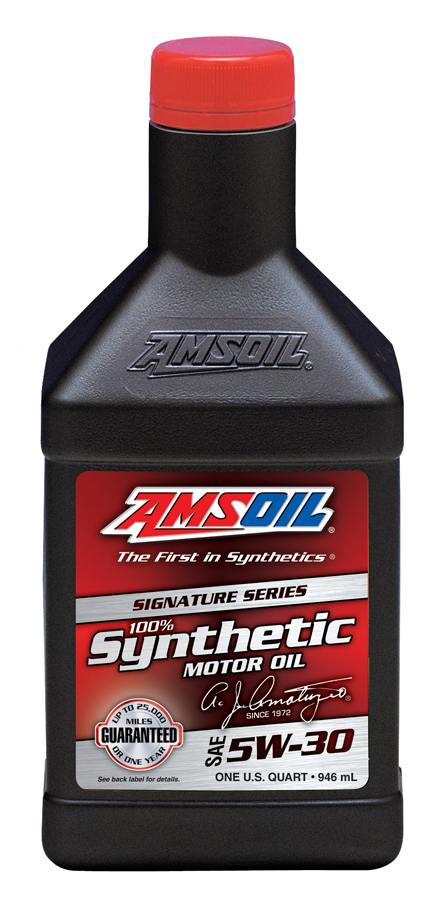Quality filtration is equally as important as quality lubrication.
Filters are often overlooked, but they are integral to keeping oil clean and performing at its best.
It’s often said that motor oil is the lifeblood of the engine. We depend on it to prevent wear, maintain cleanliness, minimize operating temperature and act as a seal. Should the oil become contaminated, its ability to perform these tasks can be greatly impaired. Dirty oil can cause piston ring wear, leading to increased oil consumption, and it can also accelerate wear in bearings and cylinders. Engine contaminants cannot be eliminated, but they can be controlled with proper filtration. Proper filtration helps keep oil clean and flowing freely, ensuring the lubricant will be able to perform its necessary tasks continuously.
... contaminated oil can reduce engine life from 60 to 80 percent
At a basic level, all filters are designed to separate solid particles from air or fluid and keep them from entering into places where they are not wanted. Think about your morning coffee and what would happen if the coffee filter failed to keep the coffee grounds out of the brewed beverage. You would have very thick and sludgy coffee, not unlike the sludge that can build up in engines with severely contaminated motor oil. In the same way as coffee filters keep grounds out of your java, oil filters capture contaminant particles within the oil to prevent them from causing engine wear. This is important because contaminated oil can reduce engine life from 60 to 80 percent. You probably can see how a poorly designed filter could lead to an engine filled with gunk.
Factors that affect oil filtration
Effective filtration depends upon four main criteria: flow, efficiency, capacity and particle size. Proper flow is important so oil can get to critical parts of the engine. If the filter creates an abnormal restriction of oil flow, it can lead to oil starvation and catastrophic engine damage. Efficiency is a measure of a filter’s ability to adequately remove contaminants of a particular size that may critically harm the application. The greater the efficiency, the better that filter is at removing contaminant particles. Capacity describes the amount of contaminants a filter can hold and still flow oil properly. Capacity is described as the service interval or useful life of the filter.
Most of these particles are smaller than what is visible with the human eye. Particles of greatest concern for most applications are 5-25 microns, which is smaller than the diameter of a human hair. Generally, if a filter has large openings, like a window screen, it will have poor efficiency but will flow very well. As screen holes get smaller, more small particles will get caught in the screen. The trade-off is that flow will be restricted. Balancing these two design features is an essential part of filter design.
Different types of filter media
The type of filter media used in a filter has a big impact on performance. Four major types exist in today’s marketplace, including open-celled foam, cellulose, cellulose/synthetic composite and full synthetic. Synthetic filter media has several advantages over the other filter media materials. Synthetic media has higher capacity and can be modified to a wide range of efficiencies. Synthetic media also removes smaller contaminant particle sizes, and is suitable for extended service intervals because of the increased capacity for contaminants. It is also typically more durable than other filter media, like paper-based materials that use sticky resins to keep fibers from falling apart over time. Cellulose media used in lower-quality filters have larger fibers and bigger holes that let more contaminants pass through the filter. Synthetic filter media is chemically manufactured rather than derived from a tree, like paper, so the fibers are much smaller and specifically designed to capture smaller particles while still keeping good flow of oil through your engine. Ah, the magic of synthetic materials.
The best protection for your vehicle
AMSOIL incorporates synthetic media into AMSOIL Ea® Filters, which rank among the highest-efficiency filters available. Better filtration equals reduced engine wear. In addition, the extra capacity to hold more contaminants means they keep filtering over extended intervals. When used in conjunction with AMSOIL synthetic motor oil, AMSOIL Ea Oil Filters designated with product code EaO are guaranteed for 25,000 miles/ one year (15,000 miles/one year in severe service). Smaller Ea Oil Filters designated with product code Ea15K are guaranteed for 15,000 miles/one year in normal and severe service. Good oil and good filtration go hand in hand, and AMSOIL products offer the best of both for your valuable equipment.


 A specialized oil for today’s specialized engines High-performance 2-stroke oil with an emphasis on exhaust power valves. Contains high levels of detergent additives to prevent valve sticking. Replaces manufacturer-branded oils. Injector use or 50:1 premix. Excellent in snowmobiles, motorcycles, PWC, ATVs and jet boats. See
A specialized oil for today’s specialized engines High-performance 2-stroke oil with an emphasis on exhaust power valves. Contains high levels of detergent additives to prevent valve sticking. Replaces manufacturer-branded oils. Injector use or 50:1 premix. Excellent in snowmobiles, motorcycles, PWC, ATVs and jet boats. See  The Top Tier of AMSOIL Synthetic Motor Oil AMSOIL Signature Series Synthetic Motor Oil delivers extraordinary lubrication in all types of automotive gasoline engines. By combining industry-premier synthetic technology with AMSOIL premium additives, Signature Series Synthetic Motor Oil exceeds the higher performance demands of modern engines.
The Top Tier of AMSOIL Synthetic Motor Oil AMSOIL Signature Series Synthetic Motor Oil delivers extraordinary lubrication in all types of automotive gasoline engines. By combining industry-premier synthetic technology with AMSOIL premium additives, Signature Series Synthetic Motor Oil exceeds the higher performance demands of modern engines.